
A group of British, American, and German researchers has completed the largest and most complicated brain map to date. This map details every neural connection of a fruit fly at the larval stage. After 12 years of work, they have created a comprehensive, 548,000-connection diagram of the brain. It charts the connections between 3,000 neurons and their axes, including connections between the two halves of the brain. This includes connections between the brain and the ventral nerve cord. The research provides insight into how neuronal movements result in behavior and learning.
Just so you understand how far we are from doing this with the human brain, these 3,000 neurons have over half a million connections. In contrast, the human brain has over 20 billion neurons and trillions of connections!
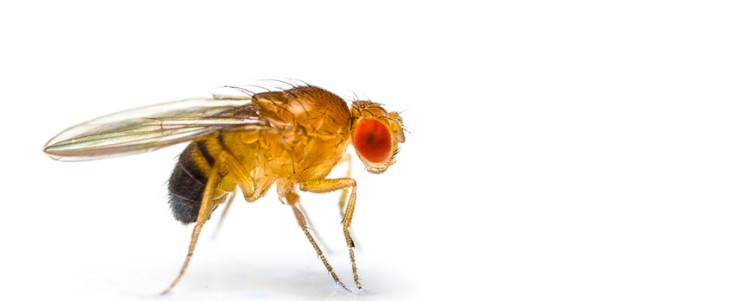
"If we want to understand who we are and how we think, part of that is understanding the mechanism of thought," says Joshua T. Vogelstein, a biomedical engineer at Johns Hopkins University. "And the key to that is knowing how neurons connect with each other."
To create this magnificent multi-functional map, researchers scanned thousands of slices of the fruit fly's brain with a high-resolution electron microscope. They then carefully connected and numbered every connection between neurons, including those that only connect in one hemisphere, in order to build a connectome.
"The way the brain circuit is structured influences the computations the brain can do," explains neuroscientist Marta Zlatic from the University of Cambridge.
"But, up until this point, we've not seen the structure of any brain except of the roundworm Caenorhabditis elegans, the tadpole of a low chordate, and the larva of a marine annelid, all of which have several hundred neurons."
Watch a video of the actual mapped brain:
The given shape represents neurons connected to one another, and the lines connecting them. The lines connecting neurons are colored differently. A connectome is a diagram of the brain that charts all of its connections. Although scientists have made significant progress charting the brain, they are currently unable to complete a connectome for large animals and humans. All brains are networks of interconnected neurons, and all brains of all species require them to perform diverse and complicated behaviors.
Drosophila melanogaster is a popular scientific research model due to its easy-to-study features, complicated yet compact brains, and many overlapping biological similarities with humans. Notably, the connecting structures observed by the researchers were determined to be most repetitive in the part of the brain that allows us to learn and remember what we've learned.
The research team suggests that the next step of their project is to learn more about the neural structure that controls certain behaviors, such as learning and decision-making, and to study the whole connectome while the fly is engaged in action.
"It's been 50 years and this is the first brain connectome. It's a flag in the sand," said Vogelstein.
"Everything has been working up to this."

A Simple Blood Test Could Detect Alzheimer Years Earlier
A few years ago, researchers have discovered a gene that could revolutionize how we diagnose Alzheimer's disease - and they found it by asking a simple question: Why do some people's brains succumb to the disease while others don't?

New Research Shows Eating Sweets Won't Make You Crave More
A groundbreaking new study challenges conventional wisdom, suggesting our preference for sweet tastes may be more stable than we think.

Science History: 17 Math Equations that Changed the World
In this article, we'll journey through 17 of these monumental formulas, demystifying the symbols to reveal the revolutionary ideas they contain and the immense impact they have had on the course of history.

The Musical Test That Could Detect Dementia Early
Researchers have developed a promising new approach: using music to detect the early signs of cognitive decline.
 2:40
2:40
The Truth About the Insect We All Love to Hate!
In an interesting explanation on the importance of the mosquito, here's why these terrible pests might have a purpose.
 3:29
3:29
The Billion-Bug Highway In the Sky - Terrific!
Watch this charming video to behold the great bug highway in the sky!

Science News: New Wonder Mushroom Cleans the Air
Let's learn about a magical new mushroom that is not only enriching the soil for farmers but also capturing CO2 from the air!

See the World From Up Close - 17 Fascinating Macro Photos
Seeing ordinary objects like honey, paracetamol, and snow through a microscopic lens teaches us how beautiful and intricate they really are!

What is the Troxler Effect and How Does it Affect You?
Learn about Troxler's effect and the optical illusions it creates in life.

14 Times Nature Inspired Groundbreaking Technology
Let’s explore 14 remarkable examples of how nature has shaped modern technology.
 8:11
8:11
Fascinating: What is the Deepest Hole Humanity Has Dug?
This video explains how low humanity has dug down so far.

13 Astonishing Things You Never Thought You'd See
Here are 13 photos of rare phenomena you never thought you'd see!
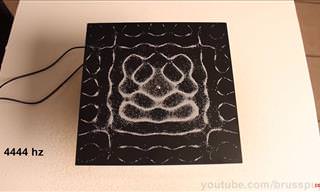 3:39
3:39
Magic is Only A Vibration Away With This Great Experiment
All it takes is some sand, a metal plate and carefully toned vibrations from a speaker to create stunning and complex patterns. This video shows you the amazing results!

5 Puzzling Mysteries That Science Finally Managed to Solve
These weird occurrences have puzzled humanity for decades, if not centuries. Finally, scientists solved them & the solutions are exciting...

Science in 2025: 8 Developments That Could Change it All
Here are some of the most exciting trends in science and healthcare to keep an eye on.
 19:27
19:27
20 of the Most Infamous Tech Product Flops In History
Here's a look at some of the most infamous and biggest technology failures in recent history.
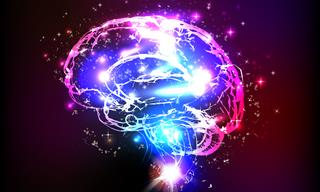
10 Fascinating Facts About the Subconscious Mind
10 facts about the way the subconscious mind works

The Most Remarkable Medical Breakthroughs of 2024
Here’s a look at some breakthroughs in medical innovation this year.
 11:15
11:15
These Paradoxes Continue to Mystify Scientists
Take a look at 7 scientific paradoxes that may never get solved.
 38:55
38:55
What Happens the Deeper You Go Underground?
What happens when pressure pushes matter beyond the limits of what we thought possible?
 21:24
21:24
James Webb Telescope: Redefining Our View of Space
Here's a brief look at all the amazing discoveries made by the James Webb Space Telescope so far.
 3:55
3:55
50 Years Later, We're Debunking the Moon Landing "Hoax"
How do we prove to people the moon landing was real? By answering their doubtful questions in this video.
 4:40
4:40
How to Make a Floating Chair
If you have some rope and wood - you too can build this floating chair!
 5:28
5:28
Just How Small is an Atom? - Fascinating!
Just how small are atoms? And what's inside them? The answers turn out to be astounding...

14 Retro Inventions That Stunned Crowds Back in the Day
These inventions were the talk of the town back in the day.
 22:52
22:52
Will AI Take Your Jobs? An Expert Explains the Future
Gonzaga University's AI professor Graham Morehead some of our most pertinent questions related to AI.
 6:47
6:47
7 Exciting Physics Tricks You Have to See!
Watch these seven remarkable physics tricks in this exciting and fun video.

Earth Is So Incredible: I Was Stunned by These 50 Facts
Here's a post that will explain to you just what's truly, scientifically amazing about our planet Earth. I'm gobsmacked.
 4:20
4:20
Ever Wondered About How Our Minds Retain and Lose Memories?
Ever wondered why you can remember something from 20 years ago, but have difficulty remembering what you had for lunch the other day? Learn why here.
 1:14:42
1:14:42
Documentary: How Did Our Universe Come From Nothing?
Can “nothing” truly become “something”? In this video, we’ll dig into this mind-bending question.
 16:26
16:26
Neanderthals Had Strength and Skills Beyond Our Limits
Neanderthals possessed truly exceptional, almost unbelievable, traits.
 6:25
6:25
Do You Like the Smell of Rain? This Is Why
One of the best things about rain and thunderstorms is that clean fresh smell afterward. But what actually causes that distinct scent?

Chronically Late? What Science Has to Say About You
There are 8 positive things that science says about late people that we all need to know.
 4:05
4:05
Kirobo: First Robot in Space!
It was one small step for robot and another giant leap for mankind...

12 Bizarre Scientific Facts You Never Learned at School
The scientific facts we collected in this list aren't the kind of stuff you'll see in a school curriculum.

Why It's So Hard to Get People to Change Their Stance
You feel that your knowledge is broader because you've read and researched a lot on the topic, but the other side still isn't convinced, even when you present facts and statistics. Why isn't that enough?

The First Valentine's Day Was Not That Long Ago...
Let us take you on a fun history lesson with these 10 first-ever things that started way back in history and remain to this day.
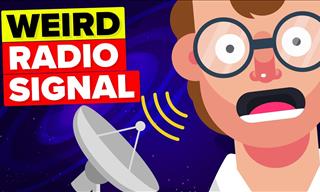 8:28
8:28
Could These Signals Be A Sign of Extraterrestrial Life?
Scientists have recently picked up on a mysterious radio signal from space, and it could mean a lot - maybe even a sign from extraterrestrial life forms.

Are You Ready to Learn About the Expanse of the Universe?
If you have an interest in the unknown, then look no further than these 15 unbelievably facts discovered about space
 4:45
4:45
Woah! Learning to Play Music Has This Effect on Your Brain
Learning how to play an instrument can do wonders for our brain...here's how!
 2:11
2:11
Here are Some Unique Tricks You Can Do at Home With Salt!
This video shows us a few interesting magic tricks that you can do anytime using salt, ice, and other items you can find at home.

2024's Biggest Breakthroughs in Science We Must Celebrate
These recent scientific breakthroughs could change the world.
 9:09
9:09
Protective Measures: How Our Body Reacts to a Tattoo
In this video, we’ll explore the microscopic war raging beneath your skin, where millions of your cells make the ultimate sacrifice to lock that ink in place, turning a defense mechanism into lifelong art.
 4:52
4:52
Neon Lights: a Beautiful Union of Science and Art
Neon signs are a beautiful blend or artistry and science, and knowing the history and the science behind them make them even more exciting

16 Interesting Things We Bet You've Never Seen Before
Once we have finished school and learned all the necessary skills at work, it may seem that no further studying is necessary. 16 interesting photos you wish you had seen in textbooks at school.
 8:12
8:12
How Humans Helped Cats Take Over the World
The relationship between humans and cats goes back as far as 9,500 years. How did it al start? And how did humans help cats essentially take over the world?
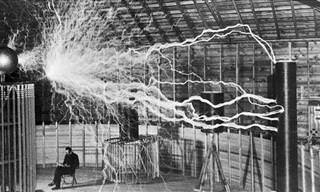
Extraordinary Inventions By Tesla That Were Never Built!
Nikola Tesla was a scientist too advanced for his time. Here are some of the inventions he never had a chance to build.
To enable your Ad-Free Subscription, please fill the fields below
Your subscription was successful, now you can enjoy an ad-free experience!! Note: To make sure you get no ads, please make sure to log in to your account. If you are logged in already, then refresh the page. The subscription can be cancelled at any time.


